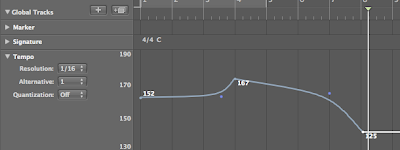 When it comes to mixing, there are basically two types of effects: insert effects and send effects. Insert effects are for effects you want to be totally 'wet'. Compression, EQ/filters, and Distortion are good examples here. These are effects that are applied directly to the instrument or audio channel itself.
When it comes to mixing, there are basically two types of effects: insert effects and send effects. Insert effects are for effects you want to be totally 'wet'. Compression, EQ/filters, and Distortion are good examples here. These are effects that are applied directly to the instrument or audio channel itself.Send effects, on the other hand, are useful when you want a mixture of the original, dry signal and the effected signal. Reverb and delay are the most commonly used send effects. These effects are applied to an auxillary send on your mixer (hardware or software) and you dial in the desired amount of effect with the send level on your instrument or audio channel. The added bonus here is that you can send as many different channels to the same send as you want. This not only saves you CPU power, but it can also make for a more realistic sounding mix, since in a real space, you'd have several sounds all being 'treated' by the space's natural reverb.
One technique that can be helpful sometimes in creating cleaner mixes, is to actually EQ the send. Why would you want to do this? Well, let's say you have a cool synth bassline that sounds a lot cooler with some delay on it, but the low frequencies in the bass sound turn into mud when sent through a delay. Leave your synth bass EQ untouched, and simply slap an EQ on your delay send and filter out those pesky low frequencies in the delay only. The mud is gone, but the mids and highs still carry the rhythmic interest the delays added.
You can also get unusual, artificial-sounding (in a cool way) effects by applying cuts or boosts to your reverb send. EQing your sends is not something you will do every day, but it can come in handy in a few instances, and can be a lot of fun to play around with at more extreme settings.


























































